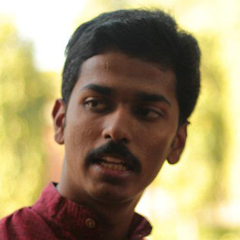Thiruvananthapuram: Even as the Kerala ministers feigned ignorance over an order granting permission to Tamil Nadu for cutting trees in the vicinity of the Mullaperiyar baby dam it has come to light that the Chief Minister's office dealing with inter-State river water sharing affairs and the Forest and Water Resource Ministries were indeed aware of it.
The decision was taken at the video conference held by the Secretaries of the Water Resources and Forest Departments of Kerala and Tamil Nadu on September 17.
The statement of Forest Minister A K Saseendran that the joint delegation of Tamil Nadu and Kerala had visited the baby dam site in June is a kind of open admission that the State Government was aware of the decision.
But the government is keeping mum about the official meeting held on September 17. It is also intriguing that the Chief Minister has not yet uttered a word on the controversy till now.
Tamil Nadu had been approaching Kerala with the demand for cutting trees since 2012 in a bid to reinforce the baby dam prior to increasing the water level in the Mullaperiyar Dam to 152 feet. But their request had been rejected on many grounds. On May 29, 2015, a request was received from Tamil Nadu through the "Parivesh" portal and it was accepted.
Parivesh portal is of the Ministry of Environment, Forest and Climate Change of the Government of India. It enables online submission and monitoring of the proposals regarding Environment, Forest, Wildlife and CRZ Clearances from Central, State and district level authorities.
The events that followed are given in chronological order below.
February 8, 2019: The request given by the Forest Department was sent to the Idukki District Collector and the Deputy Director of the Periyar Tiger Reserve. As per the demand by Kerala, Tamil Nadu once again uploaded the necessary documents.
September 3, 2020: Tamil Nadu Principal Secretary Dr K.Manivasan wrote a letter to the Kerala Forest Department Secretary demanding follow-up action.
October 19: The Forest Department sent a letter to the Forest Department Head, Chief Wildlife Warden and the Principal Chief Forest Conservator (Forest Management) and the Deputy Director of the Periyar Tiger Reserve asking for cutting of trees and removing other obstructions at the baby dam site.
June 11, 2021: Though the demand made by Tamil Nadu was for removing 23 trees, it was agreed after the joint inspection by Kerala-Tamil Nadu joint delegation that there was only need for removing 15 trees.
July 13: The Forest Department Principal Secretary shot off another letter to the officials of the Forest Department asking what action had been taken as per the letter sent on October 19 in which necessary instruction was given to cut the trees.
September 17: During the review meeting held between two States on the Parambikulam-Aliyar agreement through video conference, the Mullaperiyar issue came in for discussion. In the four-page note given to the Supreme Court of India by Kerala, it was explained that the State had given permission to Tamil Nadu to cut trees at this meeting.
Additional Chief Secretary T K Jose, Forest Principal Secretary Rajesh Kumar Sinha, KSEB Chairman Dr B. Ashok, Water Resources Secretary Pranab Jyothi Nath and Chief Wildlife Warden Bennichan Thomas were among the 14 officials who attended the meeting. As many as 11 officials, including Additional Chief Secretary Sandeep Saxena, represented Tamil Nadu during the meeting. The meeting also observed that though it was requested many times, Tamil Nadu had not submitted an application in proper format seeking permission for cutting trees.
October 19: Forest Department Principal Secretary Rajesh Kumar Sinha sent a letter to the Forest Department Head, Chief Wildlife Warden and the Principal Chief Forest Conservator (Forest Management) and Periyar Tiger Reserve Deputy Director, asking them to give a report immediately on the steps taken to allow cutting of trees in a legal manner as per the ruling of the Supreme Court and as per the directive of the State Government.
October 26: A demand was raised at the online meeting of the Supreme Court-appointed monitoring committee that Kerala should speed up the remaining work on strengthening the baby dam. Tamil Nadu also demanded that the Kerala Forest Department should expedite the formalities for granting permission for constructing approach road to the dam site. Monitoring Committee Chairman Gulshan Raj, Kerala Water Resources Additional Chief Secretary T K.Jose and Tamil Nadu Public Works Department Additional Chief Secretary Sandeep Saxena attended the meeting. Later, Kerala Water Resource Minister Roshy Augustine briefed the media about the deliberations of the meeting.
November 1: An unofficial meeting was held to discuss how to issue an order based on the decisions taken at the meeting on September 17. Forest Department Principal Secretary Rajesh Kumar Sinha and Chief Wildlife Warden Bennichan Thomas attended the meeting. As per the decision taken at the meeting, a GO was issued on November 5 allowing the cutting of trees at the dam site.
As reported earlier as many as three huge trees — Bedda Nut (Terminalia bellirica), Malabar Cinnamon (Cinnamomum malabatrum) and Dhaman (Grewia tiliaefolia) — growing close to the baby dam and 24 other trees within 10 metres of the structure should be axed to strengthen the structure. Once these trees are felled, Tamil Nadu could bring the necessary equipment and raw materials to reinforce the dam. Once the baby dam is reinforced, it could increase the water level at Mullaperiyar to 152 ft.
The Mullaperiyar Dam comprises the 152-foot-high and 1,200-foot-long main dam, a baby dam of 240 ft x 115 ft, and an earth dam 240 ft x 20 ft.

















